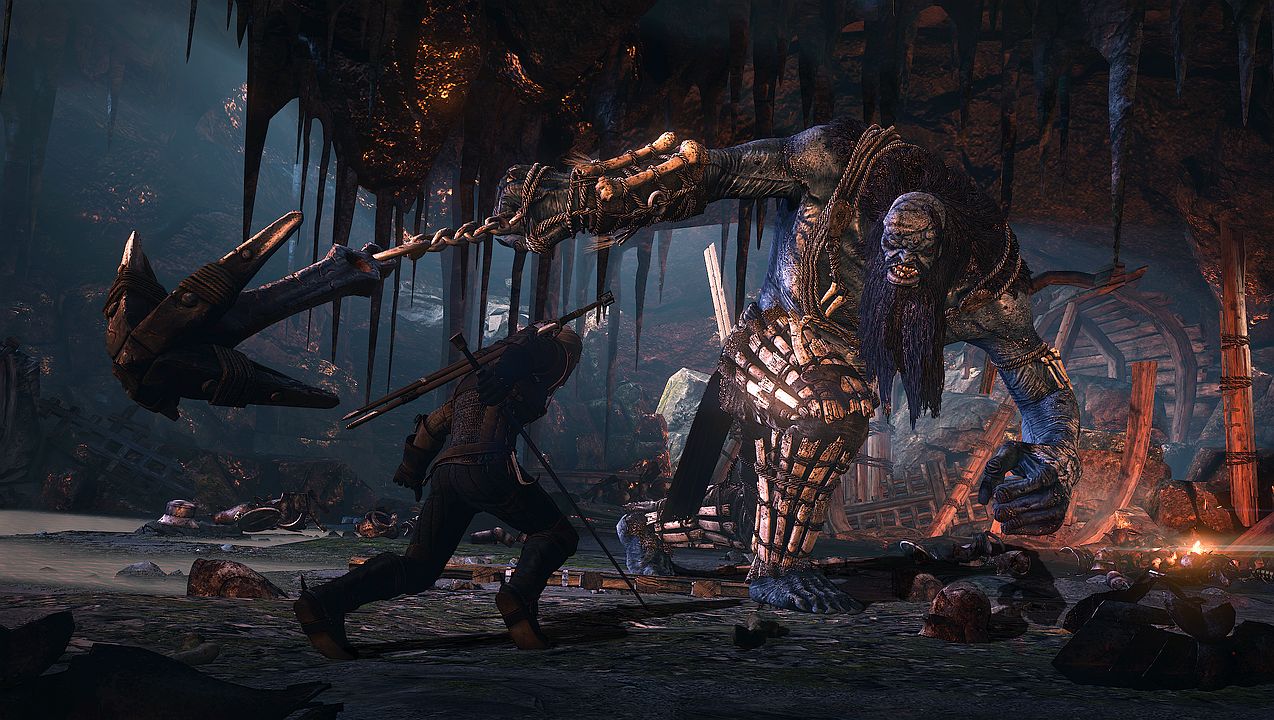Excitement has been building for the upcoming May 19th launch of CD Projekt Red’s open-world fantasy RPG The Witcher 3: Wild Hunt, and now GameStop has stepped in to help the process along with an interactive promotion. GameStop and Warner Brothers Interactive Entertainment are using Google Maps to turn city streets into monster tracking courses. The promotion kicked off on Monday earlier this week, and in this digital pursuit, players will experience the exploration and great detail seen in the fantasy world of The Witcher 3: Wild Hunt as they spot characters from the game in real-world locations and seek its monsters for prizes.
“We are excited to partner with WB, CD Projekt Red and, of course, Google, to bring this experience to life,” said Frank Hamlin, chief marketing officer at GameStop. “This program is the first of its kind for GameStop and we are having fun dipping our toe into new waters, especially waters filled with monsters.” The Monster Hunt is hosted on GameStop.com (www.gamestop.com/witcher3), and easy to play on a desktop. It leverages the Google Maps API and Javascript API alongside the Street View function to transform a Google Map into a live race to find monsters hidden at historic and exotic locales all over the globe. From there, players can start their chase for 100 monsters and a chance to win one of 100 $50 GameStop gift cards.
 Ashley Acks
Ashley Acks
GameStop’s Ashley Acks, director of marketing and promotions, answered some questions for [a]listdaily about the promotion.
Where did the idea come from for this promotion How did you develop this idea?
Given the immersive open world gameplay and monster hunting aspect of The Witcher 3: Wild Hunt, it was important for GameStop, WB, CD Projekt Red and The Marketing Arm to take that experience out of the game and engage fans with a unique marketing promotion. Google maps was the natural place to create the hunt for monsters, especially as it allowed locales all over the world to be part of the experience. The innovation was how the monsters and the game play come to life within the hunt with the blood vision and imagery of the ten different monsters used.
This is a complex promotion to create and execute. How long did this take to put together, and what was the process like for implementing this promotion?
Development itself took approximately five weeks and was a collaborative effort between GameStop, Warner Bros. Interactive Entertainment, CD Projekt Red and The Marketing Arm. The Marketing Arm handled the development and the Google Maps API’s with the assets provided by the publisher and developer.
What are the pre-orders like for The Witcher 3: Wild Hunt? Do you feel that this promotion will help boost those pre-orders?
In terms of pre-orders, GameStop has received a lot of excitement from customers around the Witcher 3 launch. Unfortunately that’s all we can say right now. [Separately, Polish developer CD Projekt Red announced that The Witcher 3: Wild Hunt has already garnered more than a million pre-order sales, as it approaches its release on May 19. The game is being launched on PS4, Xbox One and PC, but the studio did not provide a breakdown of which platforms had more pre-sales than the others. It’s safe to say a very good portion of those pre-orders have come from GameStop.
“We’ve crossed the 1 million pre-order milestone and it’s all thanks to you guys! We would like to thank all the gamers for their trust and support,” said Marcin Iwinski, co-founder, CD Projekt Red. “This is the last stretch and we’re pushing hard — over the last two weeks, we’ve increased performance on all platforms and started working full speed on the expansions, Hearts of Stone & Blood and Wine.”]

Will this promotional game include material from or information about the expansion pass for The Witcher 3: Wild Hunt?
The Expansion pass is not featured in this program. [Rather than try to monetize each expansion, CD Projekt Red has stated that anyone who purchases Wild Hunt will actually receive all 16 pieces of DLC for free. The plan is to start releasing the DLC in pairs on a weekly basis, starting from May 20th, the developer noted.]
What sort of feedback have you been getting from this promotion so far? Will GameStop be creating similar innovative promotions in the future for other game launches?
So far the feedback has been great. GameStop fans and followers have been engaging with the program and the clues posted on social channels. We had more than 2,300 people play the game in the first 48 hours, so we’re very excited to see the full results of this program. GameStop and The Marketing Arm are both always looking to create innovative promotions around title releases.
